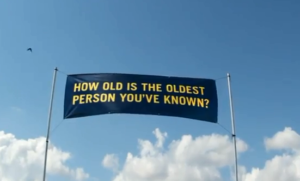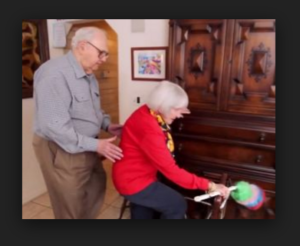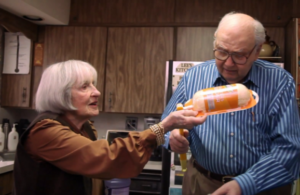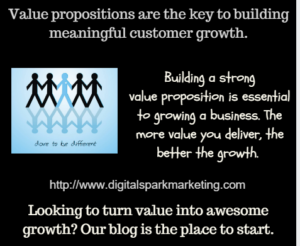Have you been fooled by a company you have done business with for many, many years? When I say fooled, I mean the broken kind of trust fooled. And yes Seth, I do want to talk about it. It involves bad customer experiences that my daughter and her husband had with their credit union. Turns out it is our credit union also.
You can’t fool people all the time, not even most of the time. And people, once unfooled, talk about the experience.
–Seth Godin
Michelle and Matt are the victims here. They were in the process of a mortgage approval with another bank (purchasing a new home and the builder’s company offered a good deal and speedy approval). During the process, they received a telephone call from the new banker wanting to know what the payments of $836 over the past 9 months to their credit union were for. They had no idea.
But here was the deal. The credit union was charging them $3 each to transfer money from their savings to their checking account for the first 6 transfers each month. After the first 6, the fee for the transfer was $25 for each transfer. This was going on for 9 months with no communication from the credit union whatsoever (totaling $836 in fees during that time). So $836 in fees for using their own money. When they called for an explanation, the bank’s only response in that was their policy on fees for that type of transfer. End of explanation.
Their next move was letters to the bank CEO and the member services committee, explaining the situation. Here is a copy of their letter:
We have been Visions Credit Union members since we graduated from college 15 years ago. Until now, Visions is the only bank with whom we have done business. The same is true for my husband. That is something that will change. Let us explain.
Over the last few weeks, we have been in the process of buying a new house and selling our old one. As a result, we have been in the process of a loan certification process. One question that surprised us was why we had paid Visions $836 over the last 9 months to use our own money. In doing research on the question, we realized you have charged us a $3.00 service charge to automatically transfer from our savings account to our checking account. And to top that, once we reached 6 transfers per month the service charge went to $25 per transfer.
We went back over our correspondence with Visions and could find no notification of the change in your process of adding service charges to move our money from one account to the other. We accept responsibility for not reviewing our account on a regular basis. But to our defense, a sense of trust was involved on our part. That was obviously a big mistake.
After our research on the issue, we immediately called Visions to discuss the issue and seek a refund. Your response: there was nothing you were going to do because your process was to respond to appeals only and we had 30 days to appeal each service charge. This is a very poor response for 15-year loyal customers holding a mortgage, home equity loan, and a respectable amount of money in our savings and checking accounts. We asked why this had happened and your response was that this was according to your policy. We asked why, when we had over $10,000 in our accounts, we were being charged anything. Again, we were told that was your policy.
We are sending this letter to you, as bank CEO, because we feel it was important for you to hear concerns such as these, directly from your members and not your staff. We believe it is a crucial reason you are losing valuable customers.
We accept responsibility for not checking our account each month. But we trusted we would hear from you if there were issues. But that was not the case.
Given that we have researched what other banks do in similar situations (nothing close in terms of fee policies) and our lack of trust in your bank, we will be selecting a new bank.
Why are we sending this letter directly to you? It is simple. You apparently are the only one with the ability to deal with this issue and consider changing your policies.
Sincerely,
| Matt and Michelle Ellis | |||||||||||||
| So what was the response? The Vice President in charge of Member Services called our daughter and could not have been more apologetic. He said that he and the CEO had been with the credit union for a little over a year and were in the process of reviewing all fee processes and putting them in line with their competitors. These fees were clearly not good policy or in line with the competition. He returned the $836 in fees completely. He also stated that they were giving the branch manager much more ability to make decisions with customers. Certainly much needed, don’t you think? (Want to see how another company handled a bad situation? … How Marriott Courtyard Turned Customer Failure into Service Recovery) Key takeaways All we can say is that good customer experiences start and end with effective communication. In this case, the absence of communications created the significance of the surprise, didn’t it? They also greatly depend on keeping up with the competition … it is a comparative thing. And finally, employee empowerment is a necessity. Without good empowerment, things can get out of hand in a hurry. Do you have a lesson about making your customer focus better that you can share with this community? Have any questions or comments to add in the section below? So what’s the conclusion? The conclusion is there is no conclusion. There is only the next step. And that next step is completely up to you. It’s up to you to keep improving your customer attention and focus. Lessons are all around you. In many situations, your competitor may be providing the ideas and or inspiration. But the key is in knowing that it is within you already. All you get is what you bring to the fight. And that fight gets better every day you learn and apply new lessons. When things go wrong, what’s most important is your next step. Try. Learn. Improve. Repeat. Are you devoting enough energy to improving your continuous learning for yourself and your team? More reading on customer focus from Digital Spark Marketing’s Library: 10 Laws of Customer Experience Design What Little Things Small Businesses Can Do To Build Customer Relationships Customer Experience Improvements Begin with Understanding Their Value |





























